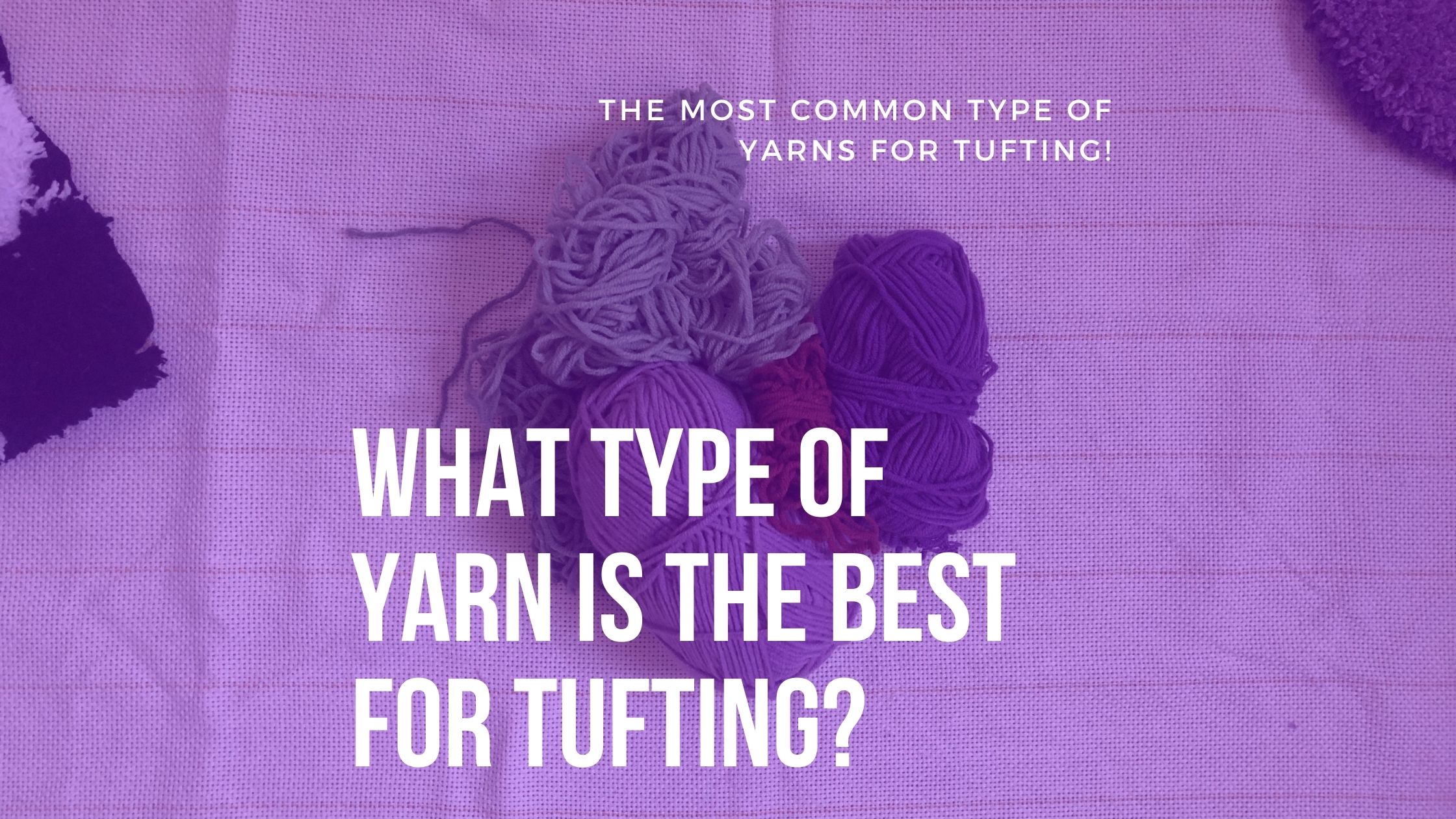What Type of Yarn is the Best For Tufting?

What Type of Yarns are There and Which one Should I Use?
The Most Common Type of Yarns For Tufting!
There is various kind of yarns in the market. You can even find mixed fibers with the percentage on them. It is one of to hardest things to decide which one is suitable for your work. While you are choosing the yarn be aware of some things that you should consider. You should decide the durability of the work, the flexibility of the material, budget, etc…
I will try to introduce and explain briefly the most common type of yarns for tufting. And will point out what you should consider in each material;
- Wool Yarn
- Acyrlic Yarn
- Cotton Yarn
- Silk Yarn
- Viscose Yarn
- Bamboo Yarn
- Jute Twine Rope
You can find detailed information for each of the yarn in the following;
Wool Yarn
Wool has been utilized in carpet making for many hundreds of years. Wool is durable and environmental-friendly. It can hold its shape after much foot traffic which makes it ideal for any floor piece like carpets and floor rugs. You can also use it for making wall-hanging rugs or pillows but it might cost more expensive than the other options. Wool yarn sheds slightly though this will depend on the type and quality of wool yarn used. That’s why keep in mind that some people can be allergic to wool.
Acrylic Yarn
It is a very popular yarn cause of its lower price and ease of finding. Acrylic is the best option for beginners who want to work on a piece that will not be used in a much foot-traffic area such as wall rugs, pillows, etc... It has a super soft texture so can be the best option for making pillows. But acrylic yarns do not hold their structure that why using them for floor rugs is not the best option.
Cotton Yarn
Cotton Yarn is another popular choice for tufting. Cotton is so soft and can not hold as great as wool is. It is cheaper than wool but more expensive than acrylic. You can find it as organic or recycled. Cotton is not a good option for cut pile tufting or carpet making, as it does not have the strength to maintain its shape (not durable). Since it is not durable and super soft, it is best for the wall rugs and pillows, etc…
Silk Yarn
Silk yarn is traditionally used to create patterned rugs. Silk is among the most expensive ones that you can work with. And is also very fine, meaning that you may need more product to complete your piece as opposed to wool or acrylic.
Bamboo Yarn
Bamboo yarn is not a very common yarn used for tufting. Bamboo is softer than cotton and is a cost-effective alternative to silk. Bamboo is flexible to stretching compared to other natural fibers such as wool. Bamboo is not commonly used in carpet making so if you are specifically looking for this material you can find mixed fiber yarns like in the picture.
Jute Twin Rope
Jute Twin Ropes are popular materials used in creating floor coverings for high traffic areas such as kitchens or doormats. They are natural fibers that are dried and processed before being weaved. They are not really commonly used in tufting but I had tried this material in a tufting gun, and it worked pretty well. But rigidity and flexibility were not the best quality if we compare with the other options.
In conclusion, there are a lot of different types of yarn in the market which has different properties, each with their own set of pros and cons. I really recommend acrylic and cotton yarns for beginners if we compare the budget-quality factor. But you can decide which yarn to use by comparing all the points that I mentioned.
How Thick Should Tufting Yarn Be?
You can buy yarn as thick as you want if it fits through the needle of your tufting gun. The thicker your yarn is the denser your tuft will be. You can substitute one or two thick strands of yarn with multiple strands of thin yarn and get the same result. The most common thickness in the market is 5-6mm.
Can I Put Multiple Pieces of Yarn to My Tufting Gun?
Of course, you can use double or multiple yarns to have a denser tuft. You can stuff your tufting machine’s needle eye with as many strands as will fit. Mostly the needle has a 1cm radius; if you have 3mm yarn then feel free to use triple strands. If your yarn is 5-6mm then go for double strands.
How Much Yarn I Need For a Rug?
The amount of yarn depends on the size of your project, how close the tufted lines are, and the height of the pile. Generally, you will use 200g yarn per square 30cm x 30cm area. This is for the cut pile machine (AK-1) with a pile height of approximately 12mm tall. But it’s always good to have more yarn with you as backup!
*Disclosure: I only recommend products I would use myself and all opinions expressed here are our own. This post may contain affiliate links that at no additional cost to you, I may earn a small commission.
Recommended Posts

How To Choose The Right Size Carpet? – A Guide For All The Rooms
December 18, 2022

Is It Hard to Punch Needle? EVERYTHING YOU NEED TO KNOW
December 17, 2022

Rug Clippers VS. Sheep Shears – The Best Rug Shaver
December 14, 2022







